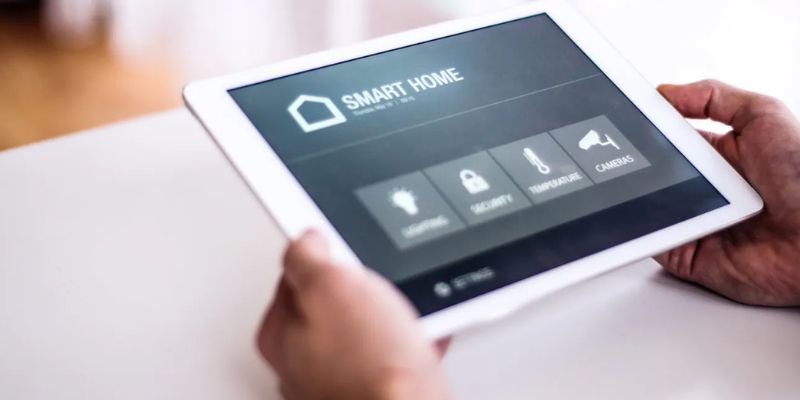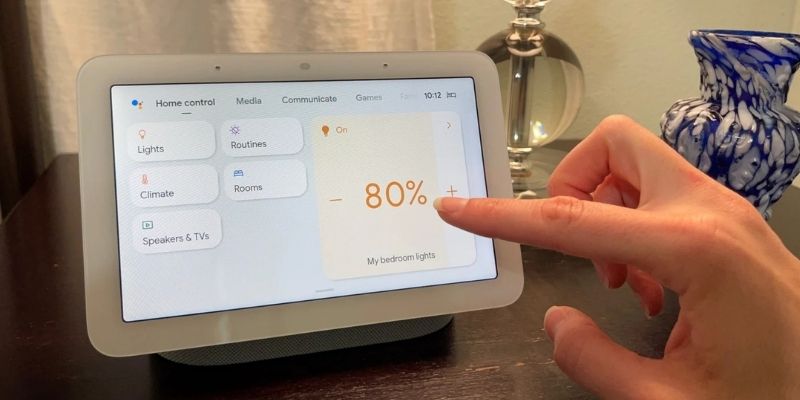How to Make a Smart Home That Thinks for You

Learning how to make a smart home that thinks for you is an exciting journey into a world where technology anticipates your needs, streamlines daily tasks, and creates a living space that feels like an intuitive partner.
Contents
Is It Hard to Learn How to Make a Smart Home?

The idea of building a smart home might seem daunting, conjuring images of complex coding or intricate wiring. In reality, learning how to make a smart home is surprisingly accessible, even for those with minimal tech experience. Modern smart home technology prioritizes user-friendliness, with manufacturers designing plug-and-play devices and intuitive apps that require little more than a smartphone and Wi-Fi. The learning curve is gentle – think of it as assembling a puzzle where each piece (a smart bulb, a sensor) comes with clear instructions and fits together seamlessly.
Several factors make this process manageable. First, the market is flooded with beginner-friendly options, from affordable smart plugs to voice assistants that guide you through setup. Online tutorials, forums, and even AI chatbots provide step-by-step support, demystifying technical jargon. Second, a smart homes is modular – you don’t need to overhaul your house overnight. Start small, like adding a smart thermostat, and expand as you gain confidence. Most devices integrate with common platforms like Google Home or Amazon Alexa, so you’re not wrestling with incompatible systems.
Challenges, if any, stem from choosing reliable devices or ensuring strong Wi-Fi coverage, but these are easily addressed with research or a quick consultation with a retailer. For those worried about privacy, modern systems offer robust encryption and opt-out data settings, putting you in control. Time investment is minimal -setting up a basic smart home can take a weekend, with each new device requiring mere minutes to configure. Whether you’re a renter, homeowner, young professional, or retiree, the process is designed to be inclusive, proving that how to make a smart home is less about tech wizardry and more about curiosity and a desire for convenience.
Choosing an Easy-to-Use Control Platform

The heart of a smart home that thinks for you is its control platform—the software or hub that unifies devices into a cohesive system. Selecting the right one is critical, as it determines how effortlessly you interact with your home. A good platform should be intuitive, compatible with a wide range of devices, and adaptable to your tech comfort level. Here’s how to choose wisely.
Popular platforms include Amazon Alexa, Google Home, Apple HomeKit, and open-source options like Home Assistant. Alexa shines for its vast device compatibility and voice-driven simplicity – perfect for beginners who want to say, “Turn on the lights” and have it just work. Google Home excels at integrating with Android devices and offers robust AI for natural language queries, like asking for weather-based thermostat tweaks. HomeKit prioritizes privacy and seamless Apple ecosystem integration, ideal for iPhone users who value security. Home Assistant, while more technical, suits tinkerers craving full customization, letting you code automations like dimming lights when a movie starts.
When choosing, consider your existing tech. If your household uses Android phones, Google Home might feel native. For voice control fans, Alexa’s versatility is unmatched. Check device compatibility – most platforms list supported brands on their websites, ensuring your smart lock talks to your smart speaker. Scalability matters too; a platform should grow with your needs, supporting new devices without forcing a system overhaul. Apps should be clean, with dashboards showing device status at a glance, and automation features – like scheduling lights to mimic occupancy – should be easy to set.
For non-techies, cloud-based platforms like Alexa or Google are plug-and-play, requiring no hardware beyond a smart speaker. Advanced users might prefer a local hub like a Raspberry Pi running Home Assistant for offline control and lower latency. Test-drive platforms via free apps before committing, and lean toward those with active communities for troubleshooting. A well-chosen platform makes a smart home feel like a helpful assistant, not a puzzle, streamlining how to make a smart home that anticipates your every move.
Starting with Basic Smart Devices

Building a smart home that thinks for you doesn’t require a full tech overhaul – starting with a few foundational devices sets the stage for intelligence and expandability. These entry points are affordable, impactful, and easy to integrate, letting you experience the magic of a responsive home without overwhelm.
- A device like Amazon Echo Dot or Google Nest Mini acts as the brain, enabling voice commands and coordinating other devices. It can answer questions, set timers, or control lights, instantly adding smarts to any room. Priced under $50, it’s a low-risk starting point.
- Smart bulbs (Philips Hue, LIFX) or plugs (TP-Link Kasa) let you control lights remotely, set schedules, or create moods – like warm tones for dinner. They’re renter-friendly, requiring no wiring, and teach you automation basics, like lights turning on at sunset.
- Devices like Nest or Ecobee optimize heating and cooling based on your habits, saving energy while keeping you comfortable. They learn when you’re home, adjust remotely, and offer insights via apps, making them a practical first step.
- Motion or door/window sensors (like Aqara or Wyze) add intelligence by triggering actions – say, lights on when you enter or alerts if a door opens unexpectedly. They’re small, wireless, and boost both convenience and security.
Start with one or two devices to grasp how they interact. These basics lay a foundation for advanced additions like smart locks or cameras, letting your home’s intelligence grow organically as you master how to make a smart home.
Easy Installation and Use

Once you’ve chosen a platform and devices, installing and using them is designed to be straightforward, ensuring a smart home feels approachable rather than intimidating. Most devices are built for DIY setup, with manufacturers prioritizing simplicity to capture a broad audience. Here’s how to get started and keep things running smoothly.
Installation
Begin with a strong Wi-Fi network – devices need stable connections, so consider a mesh router if your home has dead zones.
- Smart speakers and plugs typically just plug in, connect to Wi-Fi via an app, and are ready in minutes.
- Bulbs screw into existing sockets; apps guide you through linking them to your platform.
- Thermostats may need basic wiring (replacing an old unit), but detailed videos and compatibility checkers simplify this – many take under 30 minutes.
- Sensors stick on with adhesive, no tools required. Apps like Alexa or Google Home walk you through each step, often with QR codes for instant pairing.
Use
- Daily interaction is where the “thinking” part shines.
- Voice commands are intuitive, while apps let you fine-tune settings.
- Automation is key to a proactive home.
- Most devices learn over time, speakers recognize your voice better.
- Regular app updates keep devices current, and troubleshooting is often as simple as rebooting or checking FAQs online.
- For ease, group devices logically in your app.
- Test automations to avoid quirks, like lights flashing if a sensor’s too sensitive.
- If expanding, add devices gradually to master each before scaling up.
To Tech Home Times, mastering how to make a smart home that thinks for you is within anyone’s reach, blending simplicity with transformative potential. From choosing an intuitive platform to starting with versatile devices and embracing easy setup, the process empowers you to craft a home that anticipates your needs with minimal effort.






